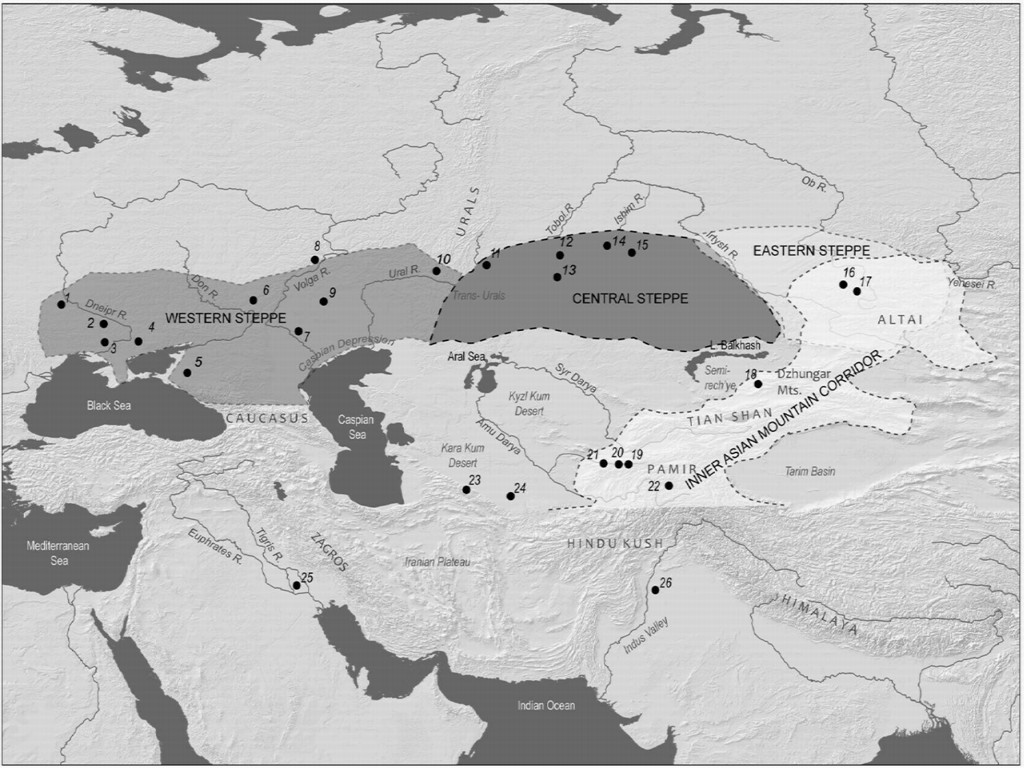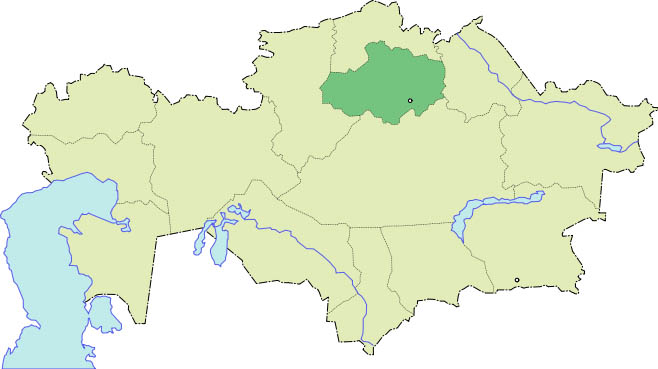Botai culture
The Botai culture is a Copper Age ( Eneolithic ) culture of the 4th millennium BC in northern Kazakhstan. The eponymous locality situated near the village Botai, not far from the capital, Astana. The Botai culture was mainly known because some researchers about 3500 BC believe we can prove the earliest domestication of the horse here.
History of Research
Archaeologists from the Carnegie Museum of Natural History, Pittsburg, USA, and scientists from the University of Exeter, United Kingdom explore intensively the Botai culture for several years.
Way of life
In the Eneolithic period a steppe- economic -cultural type that has been preserved for thousands of years with some variations emerged. The habitat of the horse breeders comprised steppe, forest steppe, sleepers and valleys. The survival of the population depended mostly on the organization of economic activity with the annual cycles. Settlements as Botai were away for the winter. In spring, the majority of the population made its way south-western direction, to the sandy soils that were released early from melted water and thus guaranteed early vegetation. The bearers of this culture lived in large settlements with pit houses. The branches were 150-200 km apart, since each settlement required an appropriate habitat to control one's own herd. In the spring, they built temporary dwellings, hunted and made winter procurements. The economy was based mainly on horse breeding, but also hunting and fishing. Bone, wood and stone processing are occupied.
Material Culture
The pottery was often decorated with geometric stitch pattern and the comb and cord ornament. Due to a stylized representation of a vessel fragment Saibert suspected that the Botaier inserting the spoke already in the Late Neolithic.
Language
The representatives of the non-literate Botai culture are connected by some researchers in the wake of Pferdedomestikation indirectly related to the Indo-Europeans, assigned to the carriers of Prototurksprache by others. For both assumptions no convincing evidence.
The settlement Botai
The settlement Botai (about 3700-3100 BC) was discovered in 1980 by the Kazakh archaeologists Viktor Seibert and has since been studied systematically. Their importance lies in the so far oldest archaeological evidence of Pferdedomestikation. The settlement Botai is about 15 hectares and is located on a flat area on the right bank of the river Iman Burluk. The traces of pit houses are clearly visible on the surface. Through the archaeological excavations until now about 100 residential buildings approximately 300,000 artifacts and hundreds of thousands of animal bones were opened over 10,000 m2, uncovered, discovered. 99.9 % of the bone derived from horses.
Pferdedomestikation
At the end of the 4th millennium BC the steppe climate humid and the vegetation was richer. According to the information of Paläogeographen and soil scientists the grass reached two meters in height. At that time, there were millions of horses. To hunt them down and hold together later, it was necessary to ride horses. This fact explains a certain morphological difference between the wild and the domesticated individuals. The research findings of American researcher David Anthony show that ten percent of all examined teeth of Botai horses wear wear traces of bone and hair bridles. The discovery of pens in 2006 confirms the conjecture of the domestication of the horse in Botai. Direct evidence for Pferdezähmung deliver the remains of Kumys ( fermented mare's milk) on potsherds, which have an age of about 5600 years.
Prior to these new findings was the Sredny - Stog culture in Ukraine as the oldest evidence of horse breeding. The documents come from the settlement Dereivka ( 4th millennium BC). However dated an AMS determination of the bone of a stallion with bridle wear on the teeth in the Scythian Iron Age.










